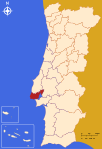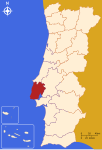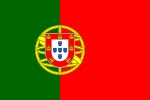Siege of Lisbon

The siege of Lisbon, from 1 July to 25 October 1147, was the military action that brought the city of Lisbon under definitive Portuguese control and expelled its Moorish overlords. The siege of Lisbon was one of the few Christian victories of the Second Crusade—it was "the only success of the universal operation undertaken by the pilgrim army", i.e., the Second Crusade, according to the near contemporary historian Helmold, though others have questioned whether it was really part of that crusade. It is seen as a pivotal battle of the wider Reconquista. The fall of Edessa in 1144 led to a call for a new crusade by Pope Eugene III in 1145 and 1146. In the spring of 1147, the Pope authorized the crusade in the Iberian peninsula. He also authorized Alfonso VII of León and Castile to equate his campaigns against the Moors with the rest of the Second Crusade. In May 1147, a contingent of crusaders left from Dartmouth in England. They had intended to sail directly to the Holy Land, but weather forced the ships to stop on the Portuguese coast, at the northern city of Porto on 16 June 1147. There they were convinced to meet with King Afonso I of Portugal. The crusaders agreed to help the King attack Lisbon, with a solemn agreement that offered to the crusaders the pillage of the city's goods and the ransom money for expected prisoners. The siege began on 1 July. The city of Lisbon at the time of arrival consisted of sixty thousand families, including the refugees who had fled Christian onslaught from neighbouring cities of Santarém and others. Also reported by the De expugnatione Lyxbonensi is that the citadel was holding 154,000 men, not counting women and children; as the Medieval account put it, after 17 weeks of siege "the inhabitants were despoiled and the city cleansed". After four months, the Moorish rulers agreed to surrender on 24 October, primarily because of hunger within the city. Most of the crusaders settled in the newly captured city, but some of the crusaders set sail and continued to the Holy Land. Lisbon eventually became the capital city of the Kingdom of Portugal, in 1255.
Excerpt from the Wikipedia article Siege of Lisbon (License: CC BY-SA 3.0, Authors, Images).Siege of Lisbon
Rua da Junqueira, Lisbon Alcântara (Alcântara)
Geographical coordinates (GPS) Address Nearby Places Show on map
Geographical coordinates (GPS)
| Latitude | Longitude |
|---|---|
| N 38.7 ° | E -9.1833333333333 ° |
Address
Rua da Junqueira (Centro de Congressos)
Rua da Junqueira
1300-343 Lisbon, Alcântara (Alcântara)
Portugal
Open on Google Maps










